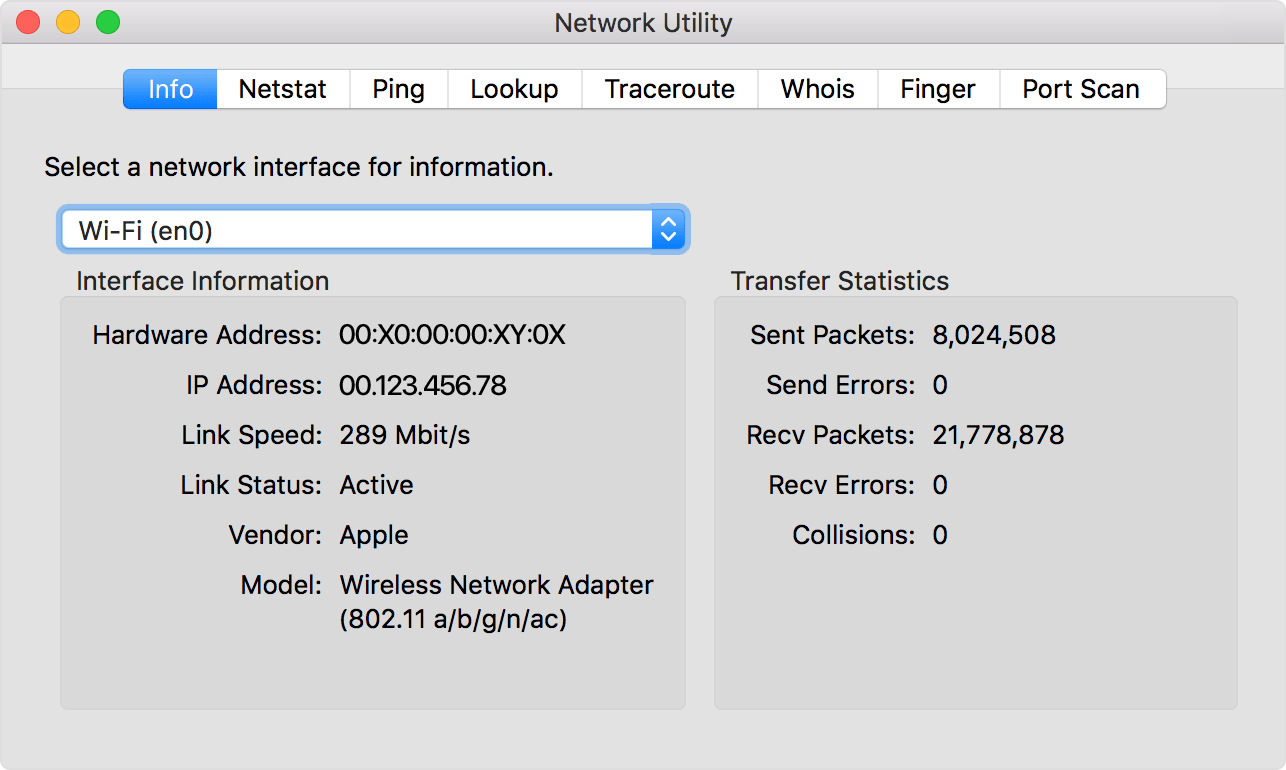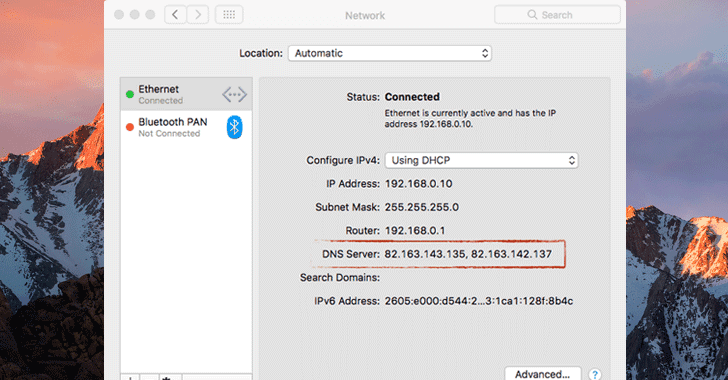In addition to showing the MAC address, the tool also shows the SNMP availability, IP address, DNS name, port number, community, system type, and system description. MAC Address Scan The MAC address scan tool scans a given range of IP's and displays the MAC addresses for various devices available in the given range. Tools Trio for Microsoft Active Directory Inactive User Account Removal Tool. Enables you to scan Active Directory and optionally remove users who have not logged in for a certain amount of time. How to check DNS settings. Note: If the lock in the lower-left corner of the window is closed, you must click it and enter your Mac OS X administrator password before you can make changes to settings. In the left-hand pane, choose the network connection you want to check.

One way to speed up your Internet browsing experience is using a faster DNS server. Today we take a look at Namebench, which will compare your current DNS server against others out there, and help you find a faster one.
Namebench
Download the file and run the executable (link below).
Namebench starts up and will include the current DNS server you have configured on your system. In this example we’re behind a router and using the DNS server from the ISP. Include the global DNS providers and the best available regional DNS server, then start the Benchmark.
The test starts to run and you’ll see the queries it’s running through. The benchmark takes about 5-10 minutes to complete.
After it’s complete you’ll get a report of the results. Based on its findings, it will show you what DNS server is fastest for your system.
It also displays different types of graphs so you can get a better feel for the different results.
You can export the results to a .csv file as well so you can present the results in Excel.
Conclusion
This is a free project that is in continuing development, so results might not be perfect, and there may be more features added in the future. If you’re looking for a method to help find a faster DNS server for your system, Namebench is a cool free utility to help you out.
If you’re looking for a public DNS server that is customizable and includes filters, you might want to check out our article on helping to protect your kids from questionable content using OpenDNS. You can also check out how to speed up your web browsing with Google Public DNS.
Links
READ NEXT- › What Can I Do with My Old iPhone?
- › How to Stream UFC 242 Khabib vs. Poirier Live Online
- › Free Download: Microsoft’s PowerToys for Windows 10
- › How to Overclock Your Computer’s RAM
- › What’s New in Chrome 77, Arriving September 10

Off-campus computers or routers that have been specifically configured to use SCS caching name servers will no longer be able to perform DNS lookups when not located on the Carnegie Mellon network.

Use the instructions below for the appropriate operating system to confirm whether you will be impacted by this change.
The SCS caching nameserver IP addresses to look for start with128.2.
Please follow the instructions for the appropriate operating system below. You can also submit a ticket for assistance.
Dns Server Mac
Check DNS Settings in Windows
- Open the Control Panel by clicking on the Windows button, then clickControl Panel
- Type 'Network and Sharing' in the upper right hand corner and click onNetwork and Sharing Center
- ClickChange Adapter Settings
- Right click on the network adapter you'd like to check (wired or wireless) and clickProperties
- SelectInternet Protocol Version 4 (TCP/IPv4)and clickProperties
- Make sure you do not have the SCS DNS entries listed underUse the following DNS server addresses
- Instead, selectObtain DNS server address automatically
Check DNS Settings in macOS
- Open System Preferences, either from the Dock or the Apple menu > System Preferences
- ClickShow All
- ClickNetwork
Note:If the lock in the lower-left corner of the window is closed, you must click it and enter your Mac OS X administrator password before you can make changes to settings.
- In the left-hand pane, choose the network connection you want to check
- Select theAdvancedbutton and theDNStab
- If you have manually entered settings, the SCS DNS servers will be listed in black font. If this is the case, use the minus ( - ) button to remove them If you're on campus and the DNS servers appear in gray font, that means they are automatically assigned. When you leave the Carnegie Mellon campus, your DNS settings will be updated to your local network provider and you will not be affected by the DNS update.
Check DNS Settings in Debian & Ubuntu
- Select the Network icon in the top panel
- SelectEdit Connections
- Choose the network connection you want to check
- ClickEdit
- Select theIPv4 Settingstab
- Make sure you do not have the SCS DNS entries listed underDNS servers
- Instead, set theMethodtoAutomatic (DHCP)and clickSave
Dns Lookup Tool Mac
Check DNS Settings in Fedora & RHEL
- Right-click the Network icon in the top panel
- SelectEdit Connections
- Choose the network connection you want to check
- ClickEdit
- Select theIPv4 Settingstab
- Make sure you do not have the SCS DNS entries listed underDNS servers
- Instead, set theMethodtoAutomatic (DHCP)and clickSave